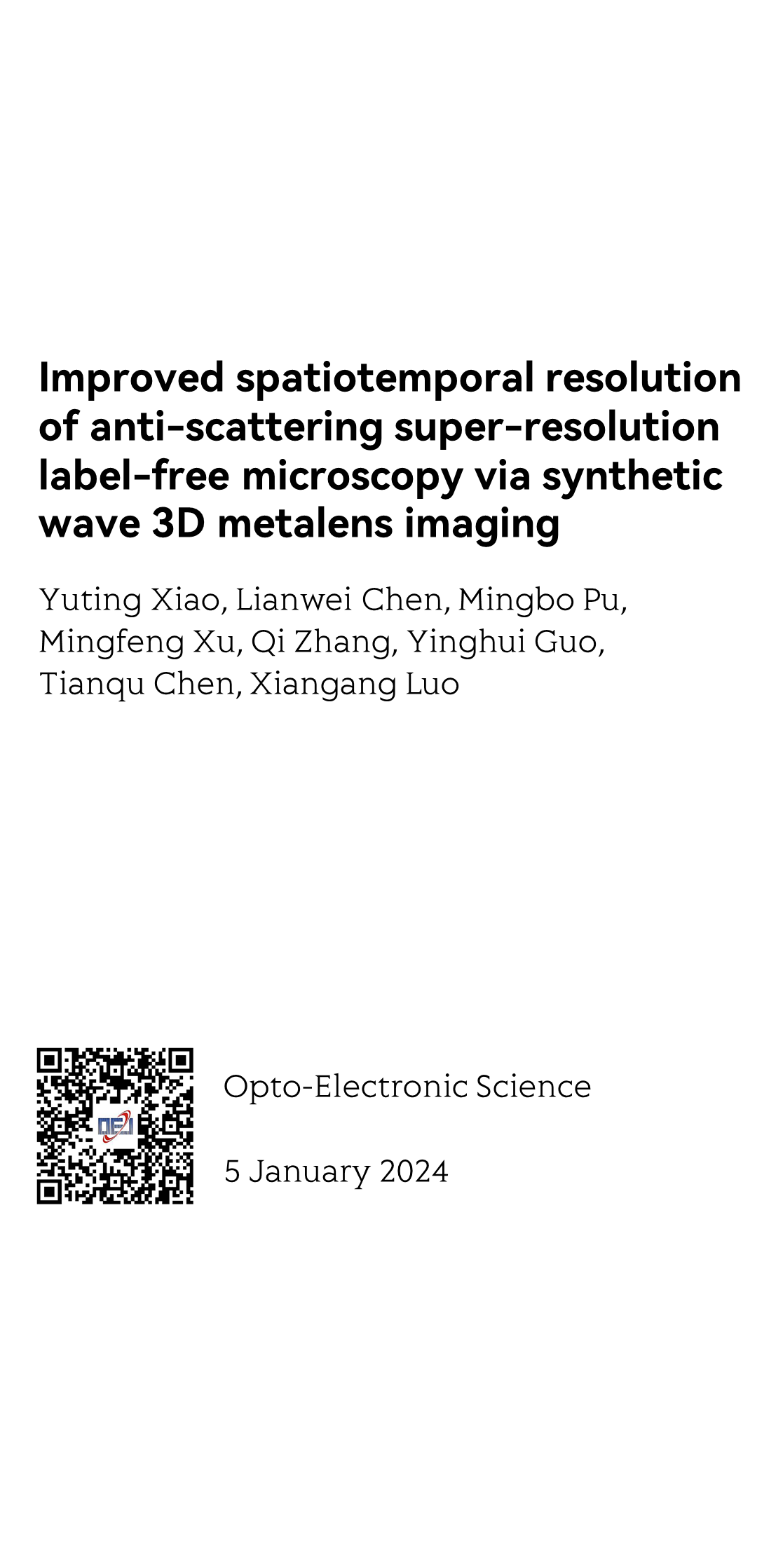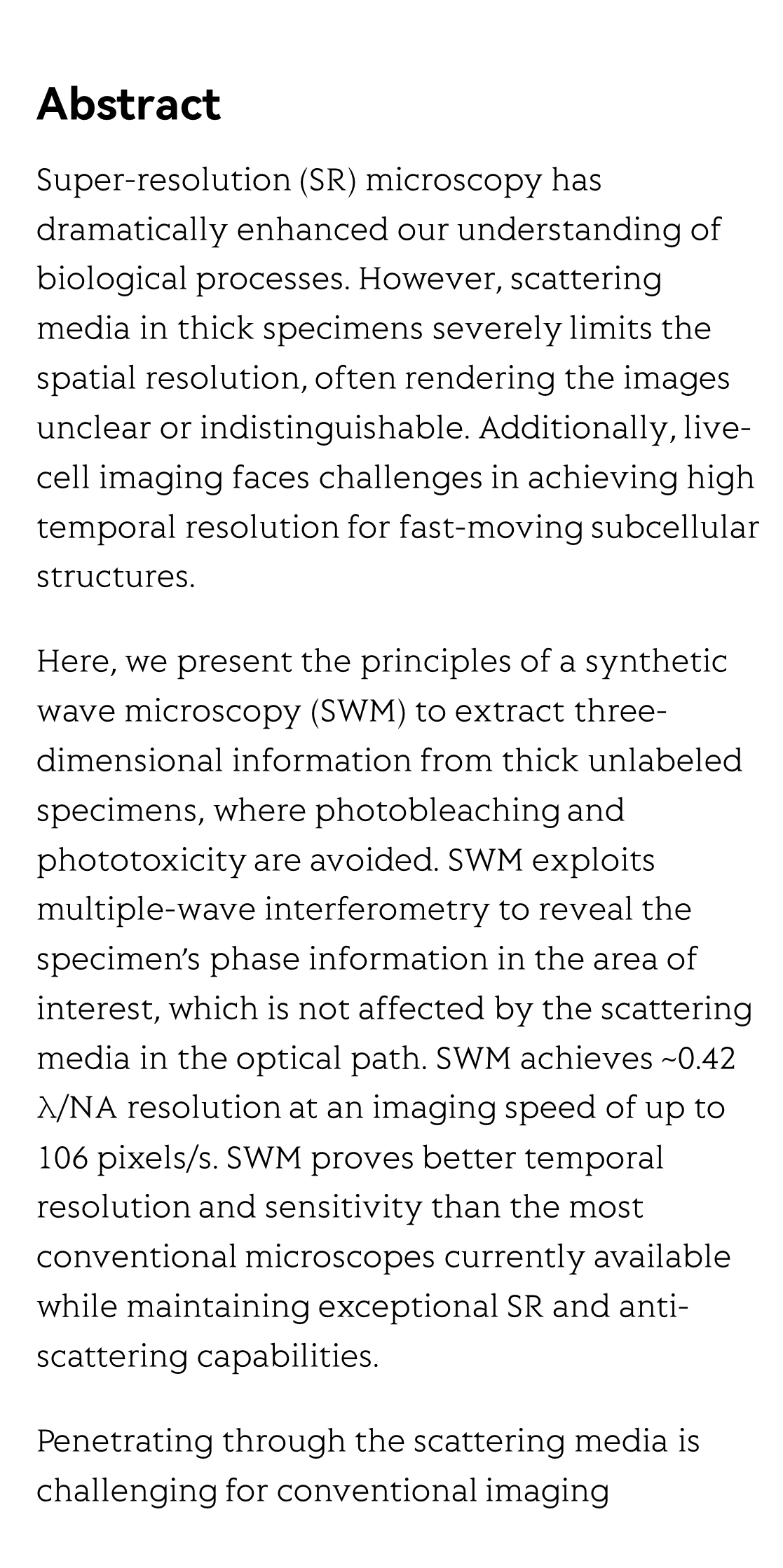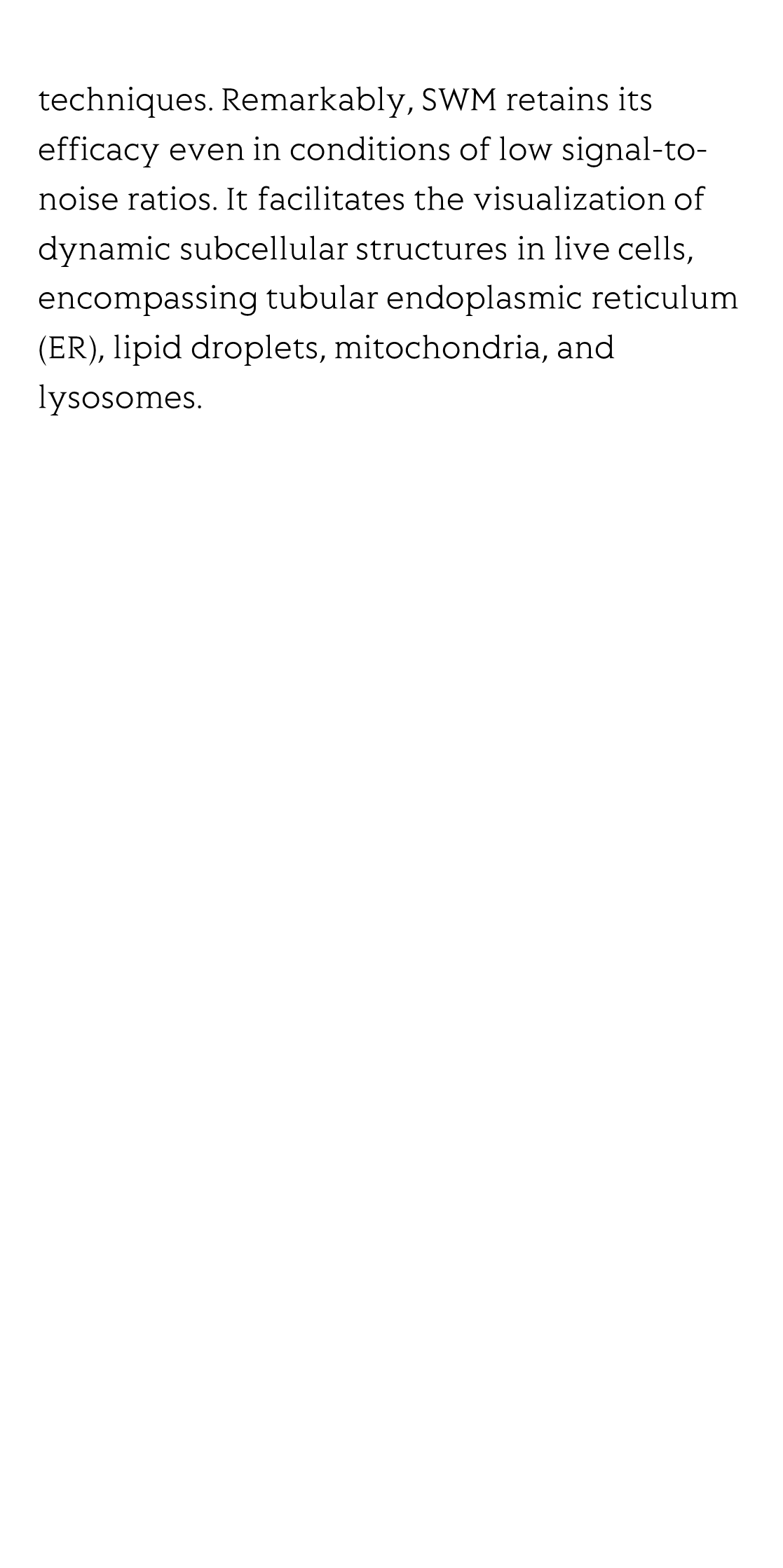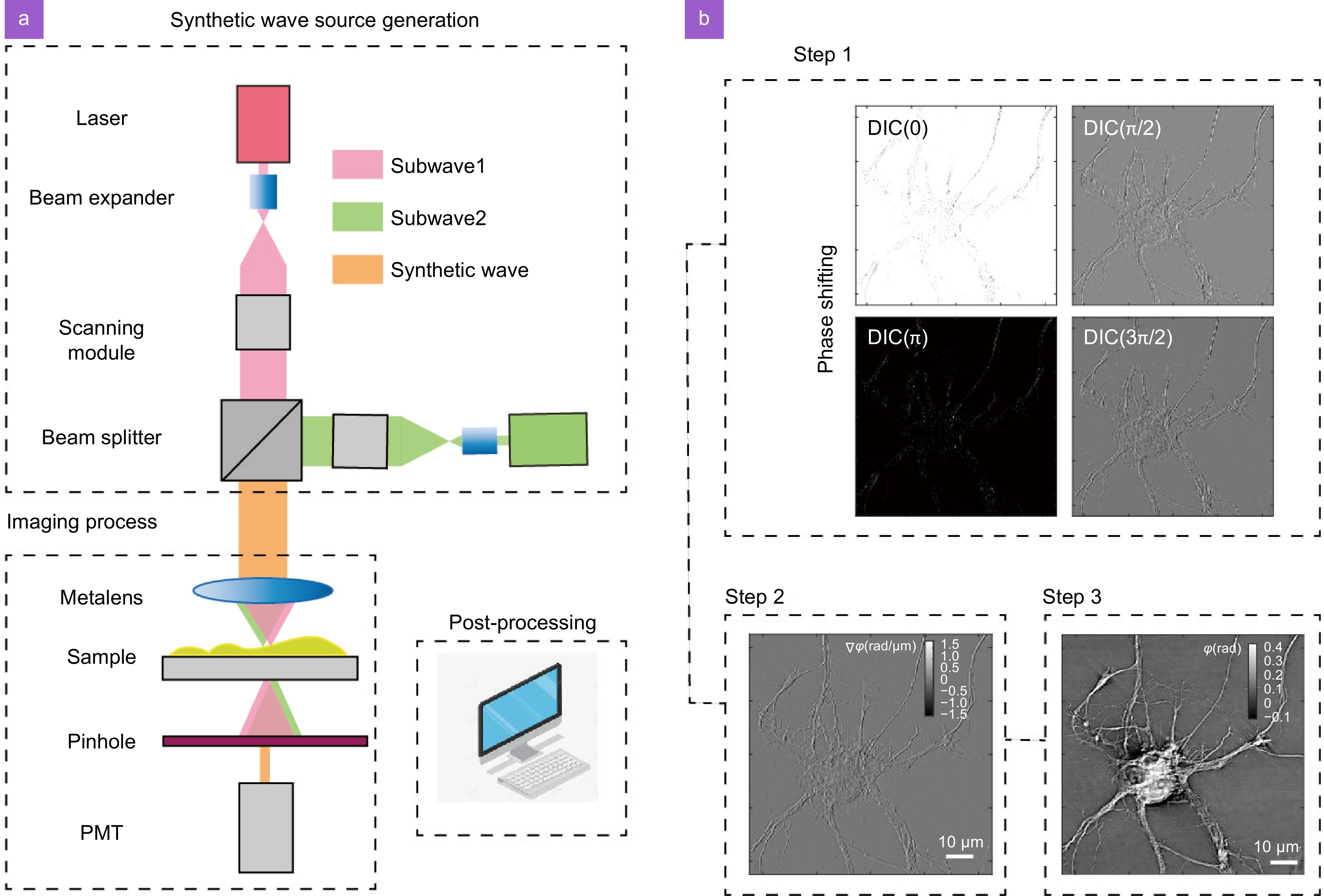(Peer-Reviewed) Improved spatiotemporal resolution of anti-scattering super-resolution label-free microscopy via synthetic wave 3D metalens imaging
Yuting Xiao 肖语婷 ¹ ² ⁴, Lianwei Chen 陈潋微 ¹ ² ³ ⁴, Mingbo Pu 蒲明博 ¹ ² ³ ⁴, Mingfeng Xu 徐明峰 ¹ ² ³ ⁴, Qi Zhang 张其 ¹ ² ³ ⁴, Yinghui Guo 郭迎辉 ¹ ² ³ ⁴, Tianqu Chen 陈天衢 ¹ ² ⁴, Xiangang Luo 罗先刚 ¹ ² ⁴
¹ National Key Laboratory of Optical Field Manipulation Science and Technology, Chinese Academy of Sciences, Chengdu 610209, China
中国 成都 中国科学院光电技术研究所光场调控科学技术全国重点实验室
² State Key Laboratory of Optical Technologies on Nano-Fabrication and Micro-Engineering, Institute of Optics and Electronics, Chinese Academy of Sciences, Chengdu 610209, China
中国 成都 中国科学院光电技术研究所 微细加工光学技术国家重点实验室
³ Research Center on Vector Optical Fields, Institute of Optics and Electronics, Chinese Academy of Sciences, Chengdu 610209, China
中国 成都 中国科学院光电技术研究所 矢量光场研究中心
⁴ School of Optoelectronics, University of Chinese Academy of Sciences, Beijing 100049, China
中国 北京 中国科学院大学光电学院
Opto-Electronic Science
, 2024-01-05
Abstract
Super-resolution (SR) microscopy has dramatically enhanced our understanding of biological processes. However, scattering media in thick specimens severely limits the spatial resolution, often rendering the images unclear or indistinguishable. Additionally, live-cell imaging faces challenges in achieving high temporal resolution for fast-moving subcellular structures.
Here, we present the principles of a synthetic wave microscopy (SWM) to extract three-dimensional information from thick unlabeled specimens, where photobleaching and phototoxicity are avoided. SWM exploits multiple-wave interferometry to reveal the specimen’s phase information in the area of interest, which is not affected by the scattering media in the optical path. SWM achieves ~0.42 λ/NA resolution at an imaging speed of up to 106 pixels/s. SWM proves better temporal resolution and sensitivity than the most conventional microscopes currently available while maintaining exceptional SR and anti-scattering capabilities.
Penetrating through the scattering media is challenging for conventional imaging techniques. Remarkably, SWM retains its efficacy even in conditions of low signal-to-noise ratios. It facilitates the visualization of dynamic subcellular structures in live cells, encompassing tubular endoplasmic reticulum (ER), lipid droplets, mitochondria, and lysosomes.
Review for wireless communication technology based on digital encoding metasurfaces
Haojie Zhan, Manna Gu, Ying Tian, Huizhen Feng, Mingmin Zhu, Haomiao Zhou, Yongxing Jin, Ying Tang, Chenxia Li, Bo Fang, Zhi Hong, Xufeng Jing, Le Wang
Opto-Electronic Advances
2025-07-17
Multiphoton intravital microscopy in small animals of long-term mitochondrial dynamics based on super‐resolution radial fluctuations
Saeed Bohlooli Darian, Jeongmin Oh, Bjorn Paulson, Minju Cho, Globinna Kim, Eunyoung Tak, Inki Kim, Chan-Gi Pack, Jung-Man Namgoong, In-Jeoung Baek, Jun Ki Kim
Opto-Electronic Advances
2025-07-17
Non-volatile tunable multispectral compatible infrared camouflage based on the infrared radiation characteristics of Rosaceae plants
Xin Li, Xinye Liao, Junxiang Zeng, Zao Yi, Xin He, Jiagui Wu, Huan Chen, Zhaojian Zhang, Yang Yu, Zhengfu Zhang, Sha Huang, Junbo Yang
Opto-Electronic Advances
2025-07-09
CW laser damage of ceramics induced by air filament
Chuan Guo, Kai Li, Zelin Liu, Yuyang Chen, Junyang Xu, Zhou Li, Wenda Cui, Changqing Song, Cong Wang, Xianshi Jia, Ji'an Duan, Kai Han
Opto-Electronic Advances
2025-06-27
Operando monitoring of state of health for lithium battery via fiber optic ultrasound imaging system
Chen Geng, Wang Anqi, Zhang Yi, Zhang Fujun, Xu Dongchen, Liu Yueqi, Zhang Zhi, Yan Zhijun, Li Zhen, Li Hao, Sun Qizhen
Opto-Electronic Science
2025-06-25
Observation of polaronic state assisted sub-bandgap saturable absorption
Li Zhou, Yiduo Wang, Jianlong Kang, Xin Li, Quan Long, Xianming Zhong, Zhihui Chen, Chuanjia Tong, Keqiang Chen, Zi-Lan Deng, Zhengwei Zhang, Chuan-Cun Shu, Yongbo Yuan, Xiang Ni, Si Xiao, Xiangping Li, Yingwei Wang, Jun He
Opto-Electronic Advances
2025-06-19







